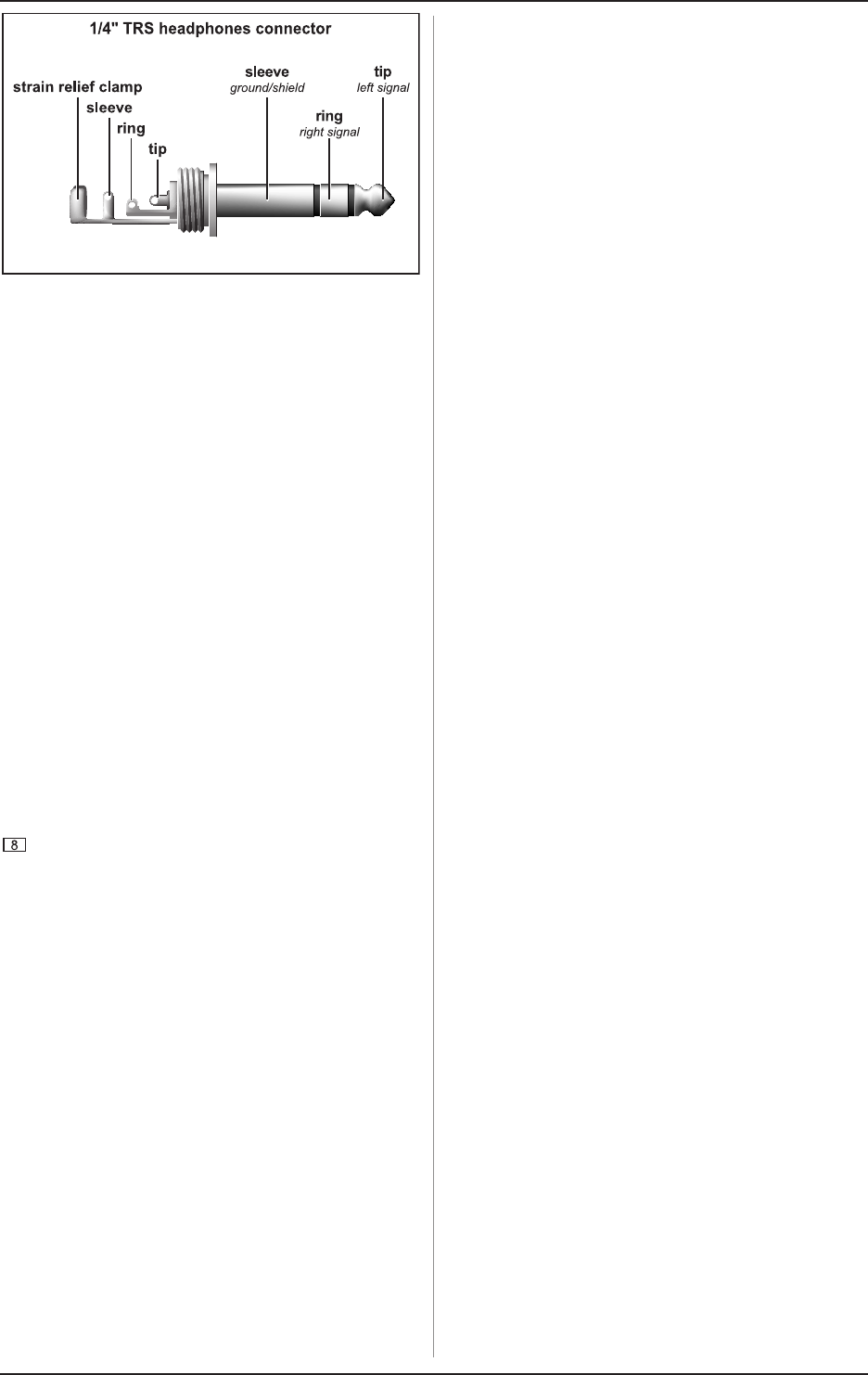
16
V-AMPIRE/V-AMP PRO/V-AMP 2
Fig. 8.4: Headphones connector
8.3 MIDI connections
The MIDI standard (Musical Instruments Digital Interface) was
developed in the early 80s to enable different makes of electronic
instruments to communicate with each other. Over the years the
range of MIDI applications has constantly expanded, and today it
is standard practice to network entire recording studios using
the MIDI standard.
The heart of such a network is a computer with sequencer
software that controls not only all the keyboards but also effects
other peripheral devices. In such a studio set-up you can control
the V-AMPIRE/V-AMP PRO/V-AMP 2 in real time from a computer.
For live performances in particular, you can also use a MIDI foot
controller to control both effect parameters and preset changes.
The MIDI connectors are international-standard 5-pin DIN
connectors. To connect your device to other MIDI equipment you
will need dedicated MIDI cables. They are commercially available
in various standard lengths.
MIDI IN: receives MIDI controller data. The receiving channel
can be adjusted in EDIT mode by pressing the A button and then
using the arrow keys.
MIDI OUT/THRU: used for sending data to a computer or any
other devices. You can transmit both preset data and parameter
changes. If set to MIDI THRU, the V-AMPIRE/V-AMP PRO/
V-AMP 2 does not send its own MIDI information, but passes on
the signal received at the MIDI IN connector (see chapter 2.1,
A).
8.3.1 Sending/receiving MIDI-SysEx data
All V-AMP models can receive system-exclusive data from
other MIDI devices provided that the MIDI function (button A) has
been activated in EDIT mode. However, this means that all presets
on your device will be overwritten automatically. You can also
transmit MIDI data from your V-AMPIRE/V-AMP PRO/V-AMP 2 to
other devices (total dump) by switching to EDIT mode and
pressing the MIDI button until the display reads d. The total
dump function can be useful for transferring all the stored data
from your device to a MIDI sequencer and storing it there.
To send individual presets to other devices: switch to EDIT
mode by pressing both arrow keys on the transmitting unit
simultaneously, activate the MIDI function and briefly tap the MIDI
button. The preset data are first filed in the temporary buffer and
can be stored in the preset position of your choice using the
store function.
8. INSTALLATION
8.4 AES/EBU and S/PDIF standards
In principle, there are two standards for digital signal
processing. AES/EBU is the professional, balanced connection
via XLR connectors. This interface is based on two identical
protocols published in November 1985 (EBU Tech. 3250-E) by
the European Broadcast Union and in December 1985 by the
Audio Engineering Society (AES3-1985). Sony and Philips
oriented themselves to this standard and developed a further
interface with unbalanced signal routing and a few other major
differences, predominantly related to the assignment of the
channel status bits. This interface, named after the two com-
panies and known as S/PDIF (Sony/Philips Digital Interface),
uses either RCA connectors or optical connections with optical
fiber cables. The procedure, standardized in IEC 958, made a
name for itself mainly due to efforts to introduce a copy-protect
technique. This standard also describes the revised AES/EBU
interface, which was adapted to the S/PDIF format and named
IEC 958 Type I (professional). The name of the S/PDIF interface
is then IEC 958 Type II (consumer).


















